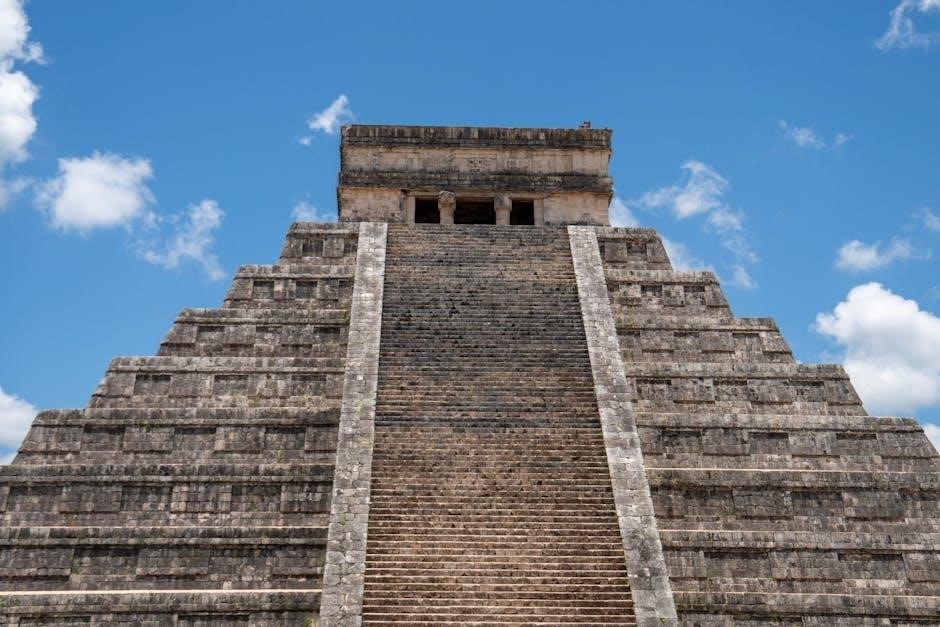The Maya, Aztec, and Inca civilizations were pre-Columbian cultures that flourished in Mesoamerica and South America, known for their advanced knowledge, social structures, and cultural achievements.
Overview of Pre-Columbian Civilizations
Pre-Columbian civilizations, including the Maya, Aztec, and Inca, flourished in the Americas before European contact. These cultures developed sophisticated societies, practicing agriculture, creating complex social hierarchies, and advancements in astronomy and engineering. They shared common traits, such as polytheistic religions and centralized political systems. Each civilization thrived in distinct regions: the Maya in Mesoamerica, the Aztecs in central Mexico, and the Inca in the Andean region. Their legacies continue to influence modern Latin American cultures and histories.
Geographical Locations and Time Periods
The Maya civilization flourished in Mesoamerica, covering areas of modern Mexico, Guatemala, Belize, and Honduras, from 2000 BCE to 1500 CE. The Aztecs emerged in central Mexico, particularly around Lake Texcoco, from the 14th to the 16th century. The Inca Empire expanded across the Andean region, spanning present-day Peru, Chile, Ecuador, and Bolivia, from the 12th to the 16th century. Each civilization adapted to their unique environments, utilizing geography to build thriving societies.
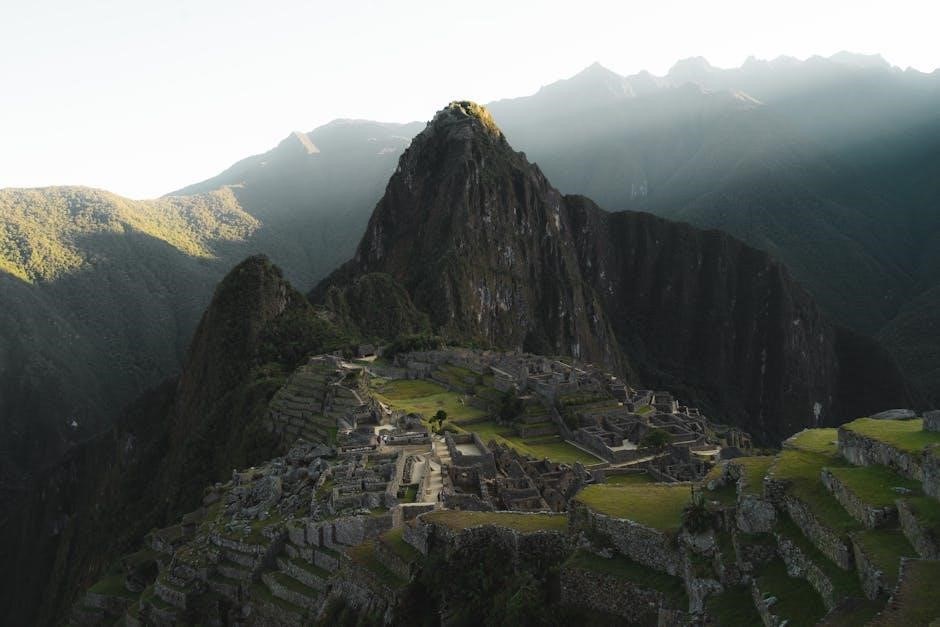
Maya Civilization
The Maya were a pre-Columbian civilization in Mesoamerica, flourishing from 2000 BCE to 1500 CE, known for their advanced astronomy, mathematics, and architectural achievements.
Maya Geography and Settlements
The Maya civilization flourished in Mesoamerica, primarily in the Yucatan Peninsula, Guatemala, Belize, Honduras, and El Salvador. Their settlements were often located in lowlands and rainforests, with cities like Tikal and Palenque serving as centers of politics, religion, and trade. The Maya adapted to their environment by developing sophisticated irrigation systems and farming techniques, allowing them to thrive in diverse geographical conditions. Their strategic placement near water sources and trade routes facilitated cultural and economic prosperity.
Maya Social Structure and Class System
The Maya society was highly stratified, with a clear hierarchy. At the top were kings and nobles, who held political and religious power. Below them were priests, responsible for religious rituals and scholarly pursuits. Artisans, merchants, and farmers formed the middle class, contributing to the economy. At the bottom were slaves, often captives from wars. This class system was hereditary, limiting social mobility. The structure supported the ruling elite while maintaining order and specialization within Maya communities.
Maya Achievements in Astronomy and Mathematics
The Maya excelled in astronomy and mathematics, developing a sophisticated calendar system. They created the Tzolkin, Haab, and Long Count calendars, accurately tracking celestial events like solar eclipses. Their mathematical system included positional notation and the concept of zero, advanced for their time. These achievements were recorded in hieroglyphics on pottery and stone, showcasing their intellectual prowess and deep understanding of the cosmos, which remains a testament to their civilization’s brilliance.
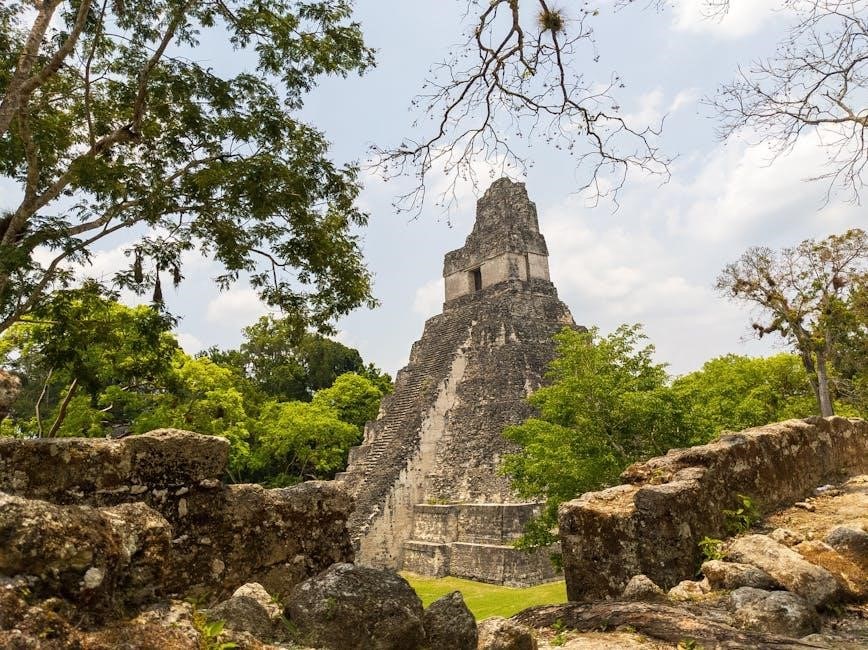
Aztec Civilization
The Aztecs were a powerful Mesoamerican civilization that flourished in Central Mexico from the 14th to the 16th century, known for their advanced political and agricultural systems.
Aztec Empire and Political Structure
The Aztec Empire was a highly centralized state ruled by an emperor, with a complex political hierarchy. At the top was the Huey Tlatloani, or emperor, who held divine authority. Below him were nobles and officials who managed the empire’s vast territories. The empire expanded through military conquest, with tribute systems imposed on subjugated peoples. This structure allowed for efficient governance and resource distribution, maintaining the empire’s power until the Spanish conquest.
Aztec Religious Beliefs and Practices
Aztec religion was polytheistic, centered around a vast pantheon of deities like Huitzilopochtli, Quetzalcoatl, and Coatlicue. Rituals included human sacrifices, believed to appease gods and maintain cosmic order. Temples, or teocallis, served as religious and political hubs. Priests conducted ceremonies, divination, and maintained calendars. The Aztecs believed in multiple creation stories and an ever-present struggle between light and darkness, influencing their daily practices and societal structures.
Aztec Economic and Agricultural Practices
The Aztecs developed a thriving economy based on agriculture, trade, and tribute. They cultivated crops like maize, beans, and squash, using chinampas (floating gardens) to farm in Lake Texcoco. Their empire relied on tribute from conquered peoples, including goods like cacao, textiles, and feathers. Trade networks extended across Mesoamerica, exchanging luxury items and essential resources. Markets, such as Tlatelolco, were bustling hubs of commerce, with cacao beans serving as a form of currency, showcasing their sophisticated economic organization.
Inca Civilization
The Inca Empire, centered in the Andes, was a vast and well-organized state known for its extensive road network and advanced agricultural techniques like terrace farming.
Inca Empire and Territorial Expansion
The Inca Empire, established in the Andes Mountains, expanded rapidly under rulers like Sapa Inca, creating the largest pre-Columbian empire in the Americas. Its vast territory stretched from modern-day Colombia to Chile, unified through an extensive road network and effective administrative systems. The Incas incorporated diverse cultures while maintaining central control, relying on agriculture, especially terrace farming, to sustain their growing population and military conquests. Their expansion showcased remarkable organizational and engineering skills, leaving a lasting legacy in South America.
Inca Social Hierarchy and Class System
The Inca Empire was highly stratified, with the Sapa Inca at the pinnacle, believed to be divine. Below him were nobles and high officials who managed the empire. The majority of the population consisted of farmers and artisans, while the lowest class included laborers and slaves. Social mobility was limited, but the mit’a system allowed commoners to contribute labor as a form of taxation. This rigid hierarchy ensured stability and facilitated the empire’s vast territorial expansion and efficient governance.
Inca Record-Keeping and Communication Methods
The Incas used quipus, knotted strings, to record numerical data and narratives. These were managed by quipucamayocs, specialized record-keepers. While effective, quipus were limited in the complexity of information they could convey. For communication, messengers relayed information across the empire, facilitating governance. This system, though lacking written language, was efficient for their needs, enabling control over a vast territory through oral and visual means.
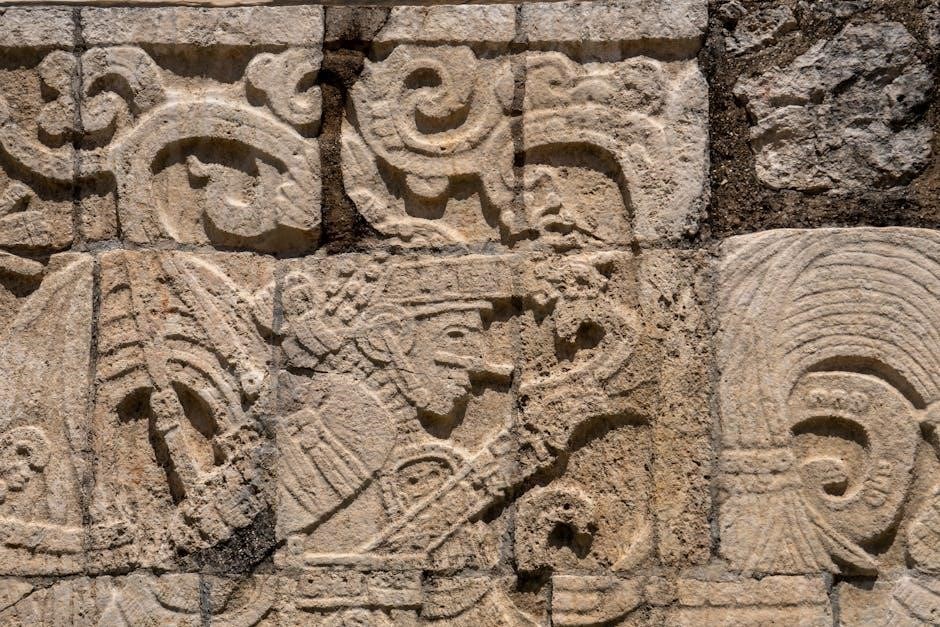
Shared Characteristics of the Three Civilizations
All three civilizations were polytheistic, believing in multiple gods, and had complex social hierarchies. They relied on agriculture and developed sophisticated systems for governance and record-keeping.
Agricultural Practices and Irrigation Systems
The Maya, Aztec, and Inca civilizations developed sophisticated agricultural practices tailored to their environments. The Maya used slash-and-burn techniques and canal irrigation in lowland areas. Aztecs built chinampas, floating gardens, in Lake Texcoco. Incas terraced the Andean slopes to farm potatoes and maize. These systems maximized food production, enabling population growth and supporting their complex societies. Their innovative irrigation methods and crop diversification were crucial for survival in diverse and challenging terrains.
Religious Beliefs and Polytheistic Systems
The Maya, Aztec, and Inca civilizations were deeply polytheistic, worshipping multiple deities tied to nature and cosmic forces. The Maya revered gods like Itzamna and Ixchel, while the Aztecs worshipped Huitzilopochtli and Quetzalcoatl. The Incas honored Viracocha and Pachamama, deities of creation and the earth. Rituals, sacrifices, and ceremonies were central to their religious practices, aiming to maintain balance and appease their gods. These beliefs influenced their daily lives, art, and societal structures, reflecting a profound connection to the divine and the natural world.
Political and Social Structures
The Maya, Aztec, and Inca civilizations had distinct political and social systems. The Maya were organized into city-states ruled by chiefs, while the Aztecs and Incas had centralized empires with powerful emperors. Social hierarchies were rigid, with ruling elites, nobles, and religious leaders at the top. The Aztecs and Incas had bureaucracies managing their vast territories, while the Maya focused on local governance. Farmers, artisans, and laborers formed the backbone of these societies, with slaves often at the bottom of the social ladder.
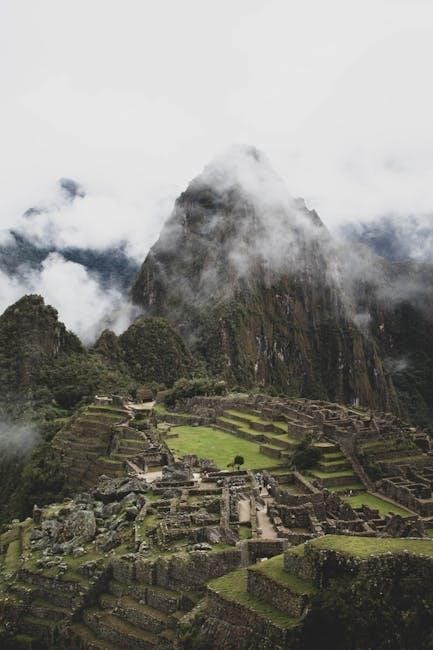
Cultural Achievements and Legacy
The Maya, Aztec, and Inca civilizations left enduring legacies in astronomy, mathematics, architecture, and art, shaping the cultural identity of modern Latin America and inspiring global admiration.
Architectural Marvels and Urban Planning
The Maya, Aztec, and Inca civilizations showcased remarkable architectural prowess. The Maya built towering pyramids aligned with celestial bodies, while the Aztecs constructed Tenochtitlán with advanced aqueducts. The Inca crafted Machu Picchu, utilizing stone masonry without mortar. Their cities were meticulously planned, reflecting religious, political, and environmental considerations. These structures demonstrate sophisticated engineering and a deep connection to their cultural and natural surroundings, leaving a lasting legacy in architectural history and urban design.
Artistic and Scientific Contributions
The Maya, Aztec, and Inca civilizations made significant artistic and scientific contributions. The Maya developed a sophisticated calendar system and advanced astronomical knowledge. Aztec artisans crafted intricate pottery and sculptures, while their scientists studied astronomy and mathematics. The Inca excelled in textile art and metallurgy, creating beautiful fabrics and goldwork. Their achievements in astronomy, mathematics, and art reflect their intellectual and creative brilliance, leaving a lasting impact on their cultures and the modern world.
Impact on Modern Latin American Cultures
The Maya, Aztec, and Inca civilizations have left a lasting legacy in modern Latin American cultures. Their traditions, languages, and art continue to inspire festivals, music, and folklore. Many indigenous communities still practice ancient customs, while modern nations celebrate their heritage through cultural festivals and historical sites. The influence of these civilizations is evident in language, cuisine, and spiritual practices, fostering a sense of pride and continuity in Latin America today.
The Maya, Aztec, and Inca civilizations made significant contributions to human history. Their advancements in astronomy, engineering, and governance left lasting legacies. Studying these cultures reveals their rich achievements, emphasizing the importance of understanding our shared historical roots.
The Significance of Studying These Civilizations
Studying the Maya, Aztec, and Inca civilizations provides insights into their cultural, scientific, and historical contributions. These societies’ advancements in astronomy, mathematics, and architecture highlight human innovation. Their polytheistic beliefs and social structures reveal diverse governance and spiritual practices. By examining these cultures, we gain a deeper understanding of the origins of modern Latin American societies and the enduring impact of their legacies on global heritage.
